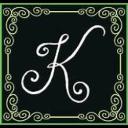Yahoo Answers is shutting down on May 4th, 2021 (Eastern Time) and beginning April 20th, 2021 (Eastern Time) the Yahoo Answers website will be in read-only mode. There will be no changes to other Yahoo properties or services, or your Yahoo account. You can find more information about the Yahoo Answers shutdown and how to download your data on this help page.
Trending News
What have you found to be the best (accurate, easy, reusable) ovulation tester?
My husband and I are planning our third child, and I would like to find out from users of ovulation testers what they think of the various kinds. What was the name brand of the test? What did you like about the test? Was it easy to use? Can it be re-used multiple times? Do you feel that it was accurate? Was it affordable to purchase/how much did it cost? Do you feel that you achieved the results you wanted using this test, or do you think you'd have had a better chance just doing it the "natural way"? Thank you for all your input! I really want to be able to plan well for this child (I've got two with birthdays two weeks on either side of Christmas! I don't want to repeat that!) Thanks again!
5 Answers
- White RavenLv 41 decade agoFavorite Answer
The cheapest, most effective, most dependable, etc., is not mechanical device, but fertility charting. Ovulation prediction kits are most effective when use with charting. The biggest reason why is that an OPK tells you when you reach the LH surge. In many cases, that measures after you have already ovulated, and that means you have missed your best time for baby making sex.
Fertility charting needs to be the first step for any woman who wants to have a child. It is safe, natural and does not rely on drugs or invasive medical procedures. Studies have shown that conception rates rise dramatically when coupled use fertility charting to time intercourse. Each individual woman, and every cycle, has its own unique routines. After several months of charting your symptoms, you should be able to see any patterns that might exist. Understanding how your chart is interpreted depends on the reliability and accuracy of the data entered and the clarity of the char pattern. Some charts are very easy to interpret while others require a bit of extra analysis and flexibility. Your body has its own hormonal patterns, as a result predicting ovulation accurately can’t be achieved until you have charted for a period of eight to 12 consecutive months. Interpreting your charts becomes easier with each fertility chart that you complete. If your chart looks like it is missing parts, you may wish to seek help when the signs become obvious. Various health factors, such as age, can affect your ability to conceive. If you are a healthy 30-year-old woman, you have about a 20 percent chance of getting pregnant each month. By the time you are age 40, your will chances drop to about 5 percent a month. But infertility can affect women of any age, and from any background. Lack of biphasic temperatures, inconsistent cervical mucus changes, incorrect cervical changes may identify any potential problems that medical assistance may help you with. If you have decided to use technical devices, with your charting, and are not seeing the desired results, you may wish to seek help from a reproduction specialist. Charts that show cycles that appear to follow little, or no expected pattern, you will want to show your doctor sooner rather than later. Knowing this information, and seeing proof of a potential problem as soon as possible, becomes more important as you age. Fertility charting is a good place to establish irregular menstrual cycles and anovulation (lack of ovulation), but it may take several months before these patterns become clear. When they do, you will want to take your fertility chart to your reproduction specialists. If you seek assistance, your doctor will probably still want you to continue charting. Many medical treatment plans will involve knowing when you are apt to ovulate. Learning how your body works will give you a base line to compare to treatment results. It is also better to learn how to chart and read your chart, now and not when you are trying to understand a new medical program, or medication, and the changes it may cause on your body.
Fertility charting is done for several reasons. It helps you to determine when, and if, you ovulate and if you made love at the right time. Charting your BBT will help you become one of the fortunate couples by increasing your chances of getting pregnant earlier. Learning about your fertility through the use of a fertility chart is a very interesting, and educational way to get pregnant. It makes you understand your body and often gives trying to conceive (ttc) more of a purpose. By correlating a number of fertility signs, such as cervical mucus and cervical position with ovulation, your fertility chart will help you determine cycle lengths and help you calculate the follicular and the corpus luteum phases. You will be able to calculate your coverline - the horizontal line drawn after ovulation to help differentiate temperatures before ovulation (low) and temperatures after ovulation (high). Taking the time to chart will help you evaluate your cycle for potential fertility problems and show any possible infertility issues. What is most important, is that it can be used so you can diagnose a pregnancy early. You cannot diagnose pregnancy early on from temperatures remaining high or by examining the cervix. The changes are too subtle to pick up and usually do not appear until well after you miss your period.
You may choose to test and monitor some secondary fertility symptoms that are caused by these additional hormones. To do so, you will be required to purchase some technological assistance to monitor the Lutenizing Hormone. The Lutenizing Hormone (LH) is the last hormone to peak before ovulation, it s the hormone responsible for the final maturation of the ovum. It is the hormone that triggers the release of the mature egg, this process is known as ovulation. Ovulation Prediction Kits (OPK) read the LH surge as it occurs, just before ovulation. The OPK is a simple urine test that can become extremely expensive if you do not time the use of it to your advantage. It is extremely easy to read since the test results as a positive for the LH levels. For financial reasons, and timing, this test works best when used with Fertility Charting. It is most effective when used to cross -check with your other fertility signs. The OPK reads the LH level present in the urine, LH levels are too low to read before they peak. LH is released in approximately 90 minute bursts for about 24 to 48 hours. The rise usually begins early in the morning and takes four to six hours to appear in your urine. As a result, it is suggested that you use a urine sample from later in the day for the most accurate results. The OPK is most effective, if used just before you suspect you are to ovulate and each day (possibly even twice per day), until you do. Do consider that OPKs are not considered very accurate since you may already be fertile before your OPK shows a positive result. During the luteal phase, (after ovulation and before your next period) the egg travels through the fallopian tube to the uterus. If fertilized the egg will implant into the lining of the uterus. The luteal phase should be at least 10 days in length, but may be as long as 17 days. All of your hormones work together to make your cycle work, but low progesterone can cause a luteal phase defect (a short luteal phase).
Source(s): Judi Corbett Ba. DSW, LTID&B, S,D&AC Personal Development Consultant Ontario Life and Business Coaching http://www.ontariolifebusinesscoach.com/ ‘Family Planning Coach’ - 6 years ago
This Site Might Help You.
RE:
What have you found to be the best (accurate, easy, reusable) ovulation tester?
My husband and I are planning our third child, and I would like to find out from users of ovulation testers what they think of the various kinds. What was the name brand of the test? What did you like about the test? Was it easy to use? Can it be re-used multiple times? Do you feel that it was...
Source(s): accurate easy reusable ovulation tester: https://shortly.im/itoXN - TennesseeChickyLv 51 decade ago
ClearBlue Easy. The one with the smilies are the easiest ones for me. You can keep the reader and just get the test strips so you're not spending $$$ each month. Basal Temp Charting is the the cheapest but I find the most annoying. You have to take your temp at pretty much the same time and it takes a couple of months to get the hang of it.
- How do you think about the answers? You can sign in to vote the answer.







